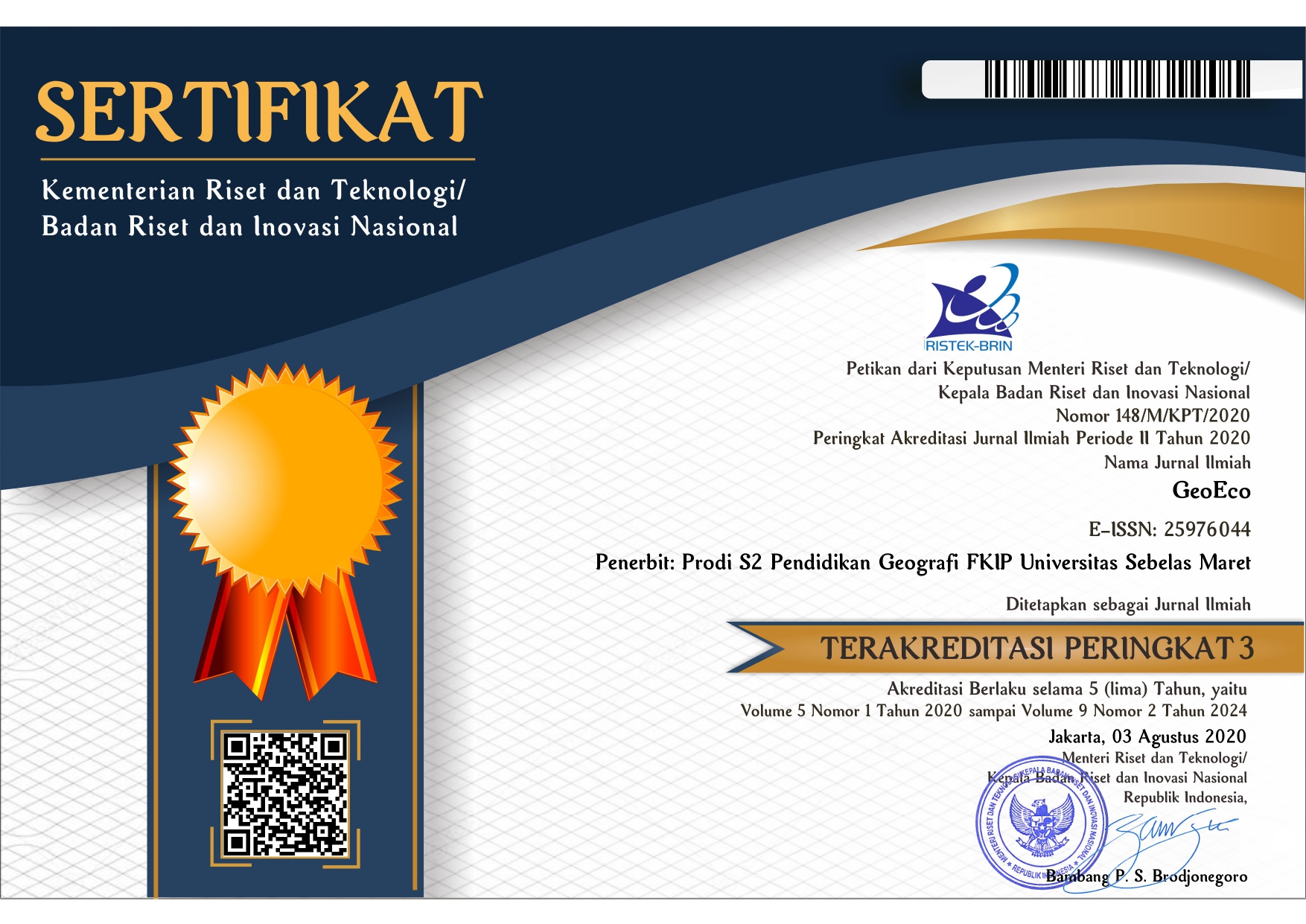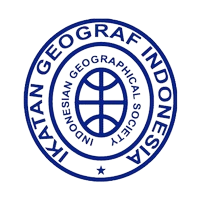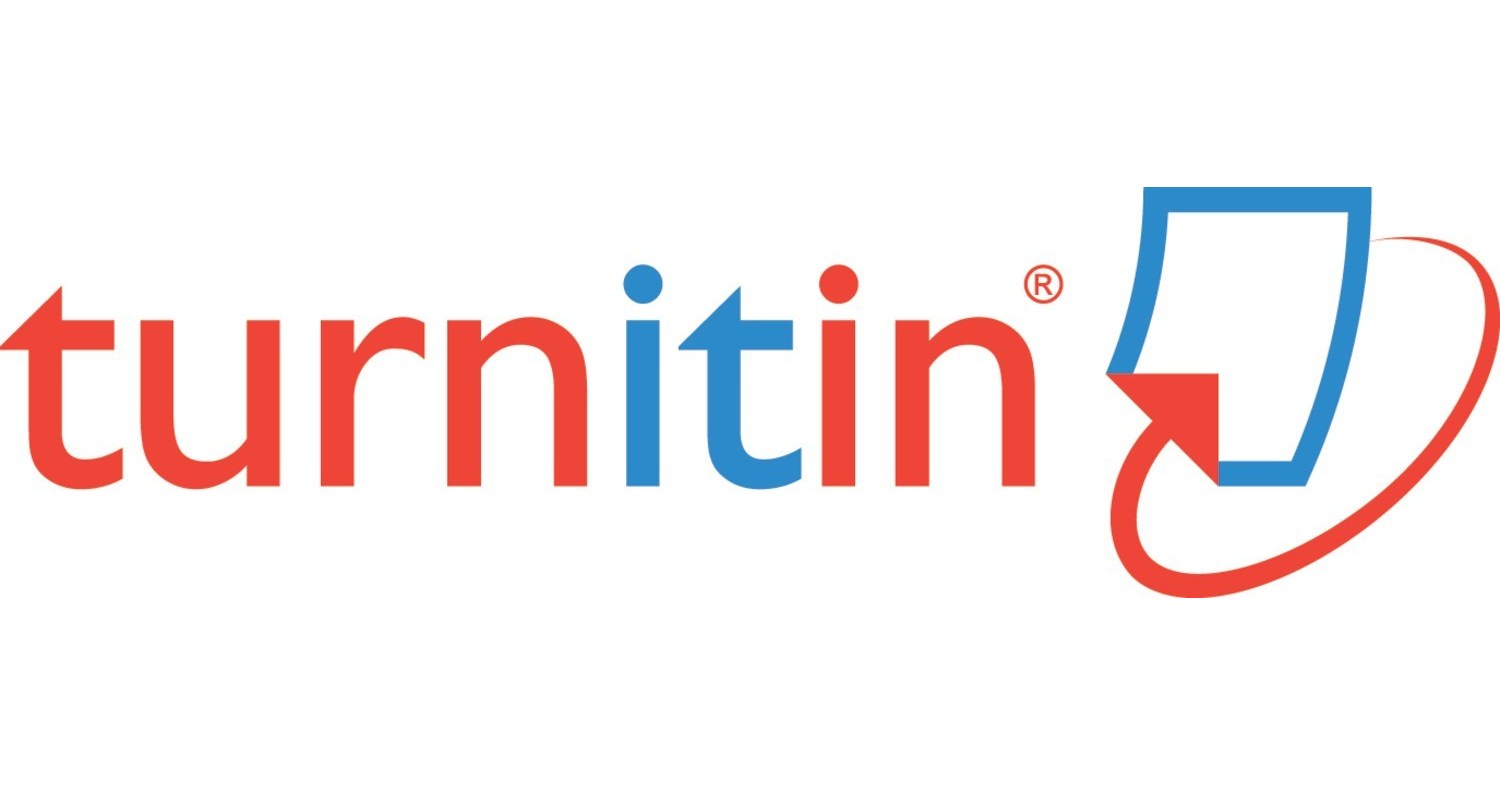EARTHQUAKE LEARNING MEDIA DEVELOPMENT FOR DISASTER RISK REDUCTION
Abstract
Indonesia is a country traversed by the Pacific ring of fire and is also the meeting point for tectonic plates, making it prone to various disasters including earthquakes. Many victims who fell during the earthquake disaster were due to a lack of understanding of the community in dealing with the disaster. An understanding of the community regarding earthquake disasters is needed to reduce the risk of earthquake disasters, one of which is done for students. Efforts to reduce earthquake risk can be done by developing earthquake learning media and applying it to students. The development of this learning media uses the 4D Model. The results showed that the use of earthquake learning media was effective in increasing students' understanding in dealing with earthquake disasters, so that this could unravel the risk of earthquake disasters for students.
Keywords
Full Text:
PDFReferences
Amri, A. (2015). Challenges in Implementing Disaster Risk Reduction Education: Views from the frontline in Indonesia. Challenges in Implementing Disaster Risk Reduction Education: Views from the Frontline in Indonesia Avianto, April, 111. https://www.researchonline.mq.edu.au/vital/access/manager/Repository/mq:44186 Amri, A., Bird, D. K., Ronan, K., Haynes, K., & Towers, B. (2017). Disaster risk reduction education in Indonesia: Challenges and recommendations for scaling up. Natural Hazards and Earth System Sciences, 17(4), 595–612. https://doi.org/10.5194/nhess-17-595-2017 BNPB. (2019). Kejadian Bencana Tahun 2019. BNPB. https://bnpb.go.id/infografis/kejadian-bencana-tahun-2019 CNNIndoensia. (2019, December 28). Dampak Gempa Ambon: 20 Orang Meninggal, 25 Ribu Mengungsi. CNN Indonesia. https://www.cnnindonesia.com/nasional/20190928174213-20-435001/dampak-gempa-ambon-20-orang-meninggal-25-ribu-mengungsi Crichton, S., & Kopp, G. (2006). Multimedia Technologies, Multiple Intelligences, and Teacher Professional Development in an International Education Project. Innovate: Journal of Online Education, 2(3). http://search.ebscohost.com/login.aspx?direct=true&db=eric&AN=EJ854488&lang=pt-br&site=eds-live&scope=site%5Cnhttp://www.innovateonline.info/index.php?view=article&id=39 Herrington, J., Reeves, T. C., Oliver, R., & Woo, Y. (2004). Designing authentic activities in web-based courses. Journal of Computing in Higher Education, 16(1), 3–29. https://doi.org/10.1007/BF02960280 ISDR. (2005). Hyogo Framework for Action 2005–2015. In ISDR (Issue January 2005). ISDR. https://doi.org/10.1007/978-1-4020-4399-4_180 Kitagawa, K., Preston, J., & Chadderton, C. (2017). Preparing for disaster: a comparative analysis of education for critical infrastructure collapse. Journal of Risk Research, 20(11), 1450–1465. https://doi.org/10.1080/13669877.2016.1178661 Leow, F. T., & Neo, M. (2014). Interactive multimedia learning: Innovating classroom education in a Malaysian university. Turkish Online Journal of Educational Technology, 13(2), 99–110. Luan, W. S., Bakar, K. A., & Hong, T. S. (2003). Differences in Anxiety between IT Competent and Incompetent Malaysian Pre-Service Teachers: Can a Discrete IT Course Taught in a Constructivist Learning Environment Solve This Problem? Turkish Online Journal of Educational Technology - TOJET, 2(4), 21–26. http://search.ebscohost.com/login.aspx?direct=true&db=eric&AN=EJ1101938&site=ehost-live Muryani, C., Yusup, Y., & Prihadi, S. (2018). The Importance of Disaster Learning Multimedia To Enhance Studentsr Preparedness. 262(Ictte), 153–156. https://doi.org/10.2991/ictte-18.2018.26 Neo, M., Neo, T.-K., & Tai, X.-L. (2007). A constructivist approach to learning an interactive multimedia course: Malaysian students’ perspectives. Australasian Journal of Educational Technology, 23(4), 470–489. https://doi.org/10.14742/ajet.1247 Paton, D., Smith, L., Daly, M., & Johnston, D. (2008). Risk perception and volcanic hazard mitigation: Individual and social perspectives. Journal of Volcanology and Geothermal Research, 172(3–4), 179–188. https://doi.org/10.1016/j.jvolgeores.2007.12.026 Preston, J. (2012). Disaster Education Race, Equity and Pedagogy. Sense Publisher. Rusdin, A. A. (2019, December 31). Sepanjang 2019, BMKG: 5.089 Gempa Bumi Guncang Maluku. Maluku Terkini. https://www.malukuterkini.com/2019/12/31/sepanjang-2019-bmkg-5089-gempa-bumi-guncang-maluku/ Sejati, P. M., Budiningsih, C. A., & Pujianto. (2019). Multimedia in Disaster Risk Reduction. Journal of Physics: Conference Series, 1233(1). https://doi.org/10.1088/1742-6596/1233/1/012090 Selby, D., & Kagawa, F. (2012). Disaster Risk Reduction in School Curricula: Case Studies from Thirty Countries. In United Nations Children Fund. United Nations Children Fund. http://www.unicef.org/education/files/DRRinCurricula-Mapping30countriesFINAL.pdf Shaw, R., Shiwaku, K., & Takeuchi, Y. (2011). Disaster Education. Emerald Group Publishing Limited. UNICEF. (2012). Teaching Disaster Risk Reduction with Interactive Methods. UNICEF. www.erra.pk/.../TEACHING DISASTER WITH INTERACTIVE MET...%0A UNISDR. (2015). Sendai Framework for DIsaster Risk Reduction 2015-2030. In UNISDR. UNISDR. United Nations. (1994). Yokohama Stategy and Plan of Action for a Safer World. World Conference on Disaster Reduction (A/CONF.206/6), May 1994, 23–27. Weichselgartner, J., & Pigeon, P. (2015). The Role of Knowledge in Disaster Risk Reduction. International Journal of Disaster Risk Science, 6(2), 107–116. https://doi.org/10.1007/s13753-015-0052-7
Refbacks
- There are currently no refbacks.












.png)

